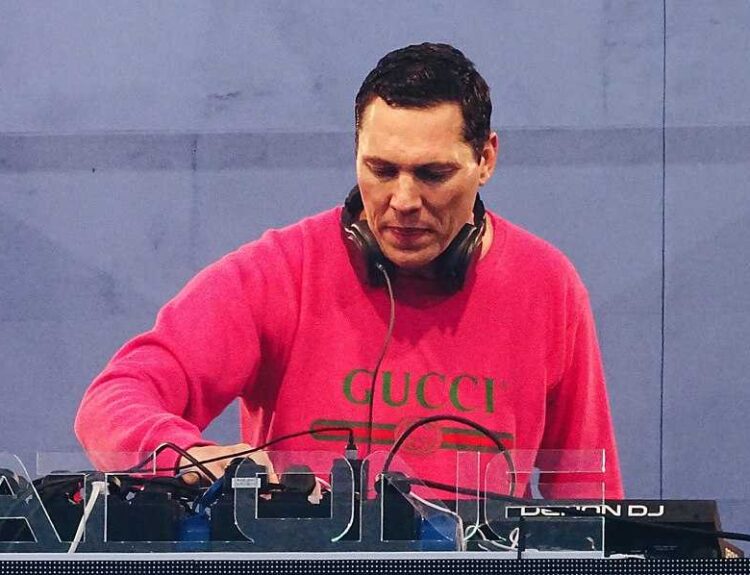Pioneering exercise in space: A new era for astronaut training!
- The flywheel exercise device was tested in microgravity for the Artemis 2 mission.
- The device combines cardio and weightlifting exercises, suitable for small spaces.
- 30 military and CSA participants conducted ground tests before the parabolic flights.
- The Falcon 20 jet was used for six parabolic flights to simulate microgravity.
- Rowing exercises were successful, but squats may need redesigning due to space constraints.
- The CSA is also testing portable health devices for space and remote communities.
An innovative exercise device designed for astronauts on the Artemis 2 mission has recently undergone its first tests in microgravity. This flywheel device, which combines cardio and weightlifting exercises, was tested during six parabolic flights in Canada, aiming to prepare astronauts for their journey around the moon, scheduled for no earlier than 2025. nnThe Canadian Space Agency (CSA) led the project, with project manager Natalie Hirsch explaining that the goal was to understand how to coach exercise techniques and prescribe effective workouts for the crew. Flywheels are ideal for confined spaces, making them a perfect fit for the limited room available in spacecraft. nnBefore the flights, the CSA partnered with the Canadian Armed Forces to recruit 30 participants for ground testing. These participants completed 10 sessions with the flywheel, gathering data on body composition, resistance, cadence, and power requirements. nnThe parabolic flights, conducted in a Falcon 20 jet, allowed researchers to simulate microgravity conditions for 20 seconds at a time. The team aimed to determine the effectiveness of various exercise programs and whether the results from Earth would be applicable in space. nnDuring the tests, rowing exercises were successfully executed, but the squat exercise presented challenges due to the device’s design. Participants tended to rotate forward while squatting, raising concerns about safety in the confined space of the Orion spacecraft. nnIn addition to the flywheel, the CSA tested several portable health devices as part of their Health Beyond Initiative, which aims to develop tools for both space missions and remote communities on Earth. These devices, including the EZResus app, were evaluated under the stress of parabolic flights to ensure their effectiveness in emergency scenarios. nnOverall, the campaign provided valuable insights into the flywheel’s design and the feasibility of exercising in microgravity, paving the way for future astronaut fitness programs.·
Factuality Level: 8
Factuality Justification: The article provides a detailed account of the testing of a flywheel exercise device for the Artemis 2 mission, including relevant quotes from experts and specific data about the testing process. While it is informative and mostly factual, there are minor instances of tangential information and some promotional language that could be seen as slightly biased towards the success of the project.·
Noise Level: 8
Noise Justification: The article provides a detailed account of the testing of a flywheel exercise device for astronauts, including scientific insights and practical applications for space missions. It discusses the methodology, results, and implications of the research, while also holding relevant organizations accountable for their roles in the project. The content is focused and relevant, supporting claims with evidence and examples, which contributes to a low noise level.·
Public Companies: NASA (NASA)
Private Companies: Applications MD
Key People: Natalie Hirsch (Project Manager of Operational Space Medicine at Canadian Space Agency), Jeremy Hansen (Astronaut, Mission Specialist for Artemis 2), Reid Wiseman (NASA Astronaut), Christina Koch (NASA Astronaut), Victor Glover (NASA Astronaut), Tristan Richmond (Operations Engineer at Canadian Space Agency), Andre Douglas (Backup Astronaut for Artemis 2)
Financial Relevance: No
Financial Markets Impacted: No
Financial Rating Justification: The article discusses an exercise device for astronauts in the Artemis 2 mission, which is not directly related to financial topics or impacting financial markets or companies.
Presence Of Extreme Event: No
Nature Of Extreme Event: No
Impact Rating Of The Extreme Event: No
Extreme Rating Justification: The article discusses a testing campaign for an exercise device intended for use in space, but does not mention any extreme events such as natural disasters, crises, or accidents.·
 www.space.com
www.space.com 





